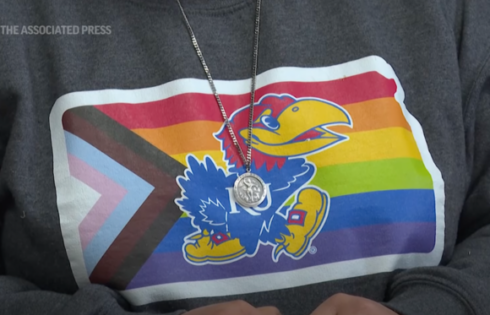 About four decades since it voted to ban ROTC from campus, Stanford University’s faculty senate has voted to allow ROTC back on its campus Thursday. Twenty-eight senators voted to allow to allow the program’s reinstatement, while nine voted against it and three abstained.
About four decades since it voted to ban ROTC from campus, Stanford University’s faculty senate has voted to allow ROTC back on its campus Thursday. Twenty-eight senators voted to allow to allow the program’s reinstatement, while nine voted against it and three abstained.
The vote followed a discussion among the Senate. Ewart Thomas, chair of the ad hoc committee charged with investigating the return of ROTC, gave the reason why the committee recommended its return: “We offer our recommendation today as a way of reducing this [civilian-military] gap . . . we believe [ROTC] will improve the quality of undergraduate education at Stanford for ROTC and non-ROTC students.”
“A huge part our education here at Stanford is to expose us to diverse ways of life, points of view,” stated student Imani Franklin ’13, a student member of the committee. She added that with ROTC on campus, “we’d be able to put a face to military service, to humanize the people who fight our wars. . . .”
In a statement, Stanford University President John Hennessy said about the vote, “Based on the vote of the Faculty Senate, we will begin conversations with the U.S. military about the process for re-establishing ROTC at Stanford.”
He went on to state, “Our country needs innovative, broadly educated military leaders, and we believe that ROTC”s presence on our campus will be mutually beneficial.”
The process to eliminate the program from campus began in the late 1960s amidst the Vietnam War and an accompanying general anti-war sentiment that pervaded the campus. In 1970, the Stanford faculty senate banned ROTC due to concerns over the quality of teaching and punitive clauses, which conscripted any student who dropped out of the ROTC program.
Don’t Ask, Don’t Tell (DADT), passed by Congress and signed into law by President Clinton, allowed homosexual and bisexual individuals to serve in the military, but barred them from openly revealing their sexual orientation and barred superiors from inquiring into their sexuality as well. Those who opposed ROTC’s return to campus argued that the policy was discriminatory and that so long as it existed, ROTC could not be allowed to return.
In spring 2010, DADT’s repeal appeared to be imminent, the faculty senate decided to launch an ad hoc committee to review the prospect of having ROTC on campus. Leading this push was former Secretary of Defense William Perry and prominent historian David Kennedy, both Stanford faculty members.
Kennedy reiterated his support today, saying, “The military provides us all with a public service and a public good. It’s called national security.”
Over the past year, the ad hoc committee researched the history of ROTC at Stanford, differing perspectives on the military, and elicited community opinion. On April 22, it recommended that the faculty senate vote in favor of ROTC, largely on the grounds of the benefit in diversity and community enrichment that it would bring to Stanford.
Students on both sides of the issue have been active in the debate over the past year. LGBTQ (Lesbian, Gay, Bisexual, Transgender, and Queer) activists were among those who originally opposed ROTC because DADT was still in effect. Since DADT’s overturn, they have opposed it because transgender people are still not allowed to serve in the military.
Regarding the DADT’s impact on the debate, Perry stated today, “We have reached this decision point at Stanford only because congress repealed the DADT.”
Professor of Political Science Gary Segura opposed the measure due to the transgender discrimination argument. He argued that the vote was “premature with respect to Don’t Ask Don’t Tell.” He emphasized that the military’s policy toward transgendered students would ensure that there was always “an asterisk on our non-discrimination policy.”
Hennessy stated, “We understand concerns about the military’s continuing discrimination against transgender people, and we share those concerns. But if the leadership of the military is drawn from communities that teach and practice true tolerance, change is more likely to occur.”
In early April, the Stanford student body voted on whether or not ROTC should be allowed to return. About 44% of students were in support of its return, while 17% were opposed. 38% explicitly abstained from the vote, as “Abstain” was a given option. Some of the abstentions can likely be attributed to an abstention campaign run by anti-ROTC groups on campus.
Stanford’s decision follows recent decisions at Harvard and Columbia to allow ROTC to return to their campuses. Moving forward, the reality of an ROTC branch returning to Stanford University in the coming years now rests with the U.S. military.
Kyle Huwa is an editor of the Stanford Review and blogs at Fiat Lux. He is a contributor to the Student Free Press Association.
Like The College Fix on Facebook / Follow us on Twitter





Please join the conversation about our stories on Facebook, Twitter, Instagram, Reddit, MeWe, Rumble, Gab, Minds and Gettr.